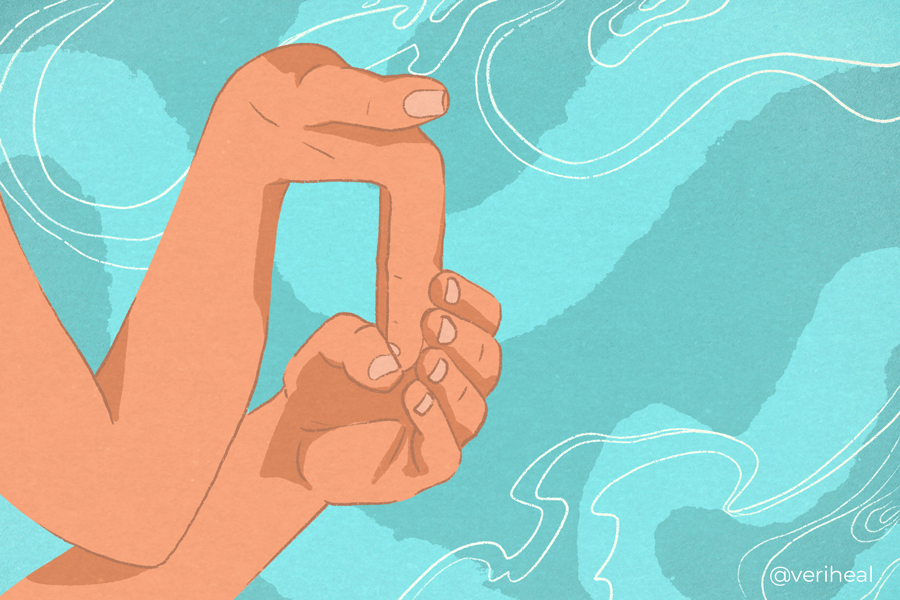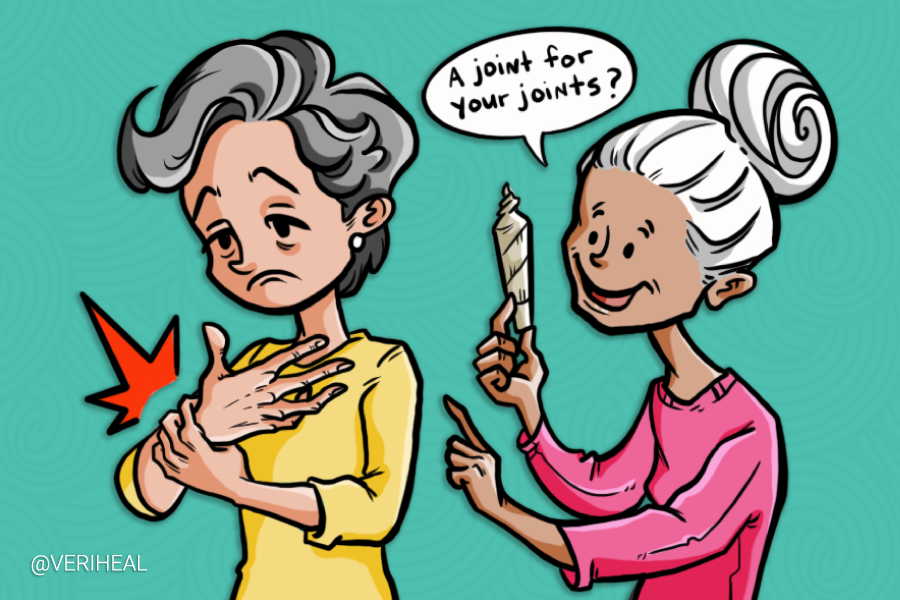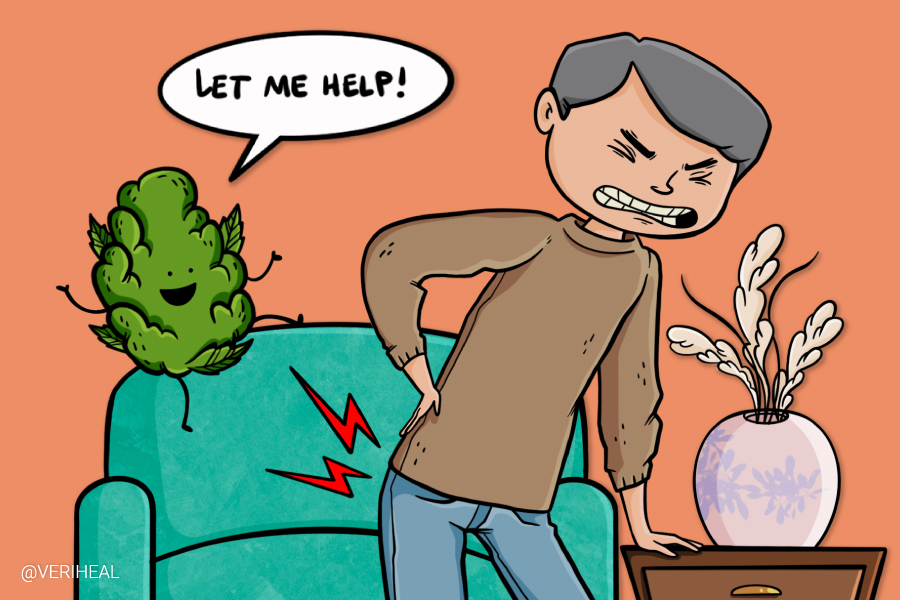Medical Marijuana for Patients With Ehlers-Danlos Syndrome
- Managing EDS Symptoms with Cannabis
- Generalized Ehlers-Danlos Syndrome
- Understanding the Different Types of EDS
- Classical EDS (cEDS)
- Classical-like EDS (clEDS)
- Cardiac-valvular EDS (cvEDS)
- Vascular EDS (vEDS)
- Hypermobile EDS (hEDS)
- Arthrochalasia EDS (aEDS)
- Dermatosparaxis EDS (dEDS)
- Kyphoscoliotic EDS (kEDS)
- Brittle Cornea EDS (BCS)
- Spondylodysplastic EDS (spEDS)
- Musculocontractural EDS (mcEDS)
- Myopathic EDS (mEDS)
- Periodontal EDS (pEDS)
Ehlers-Danlos syndrome (EDS) is a group of genetic and inheritable medical conditions that you can get a medical cannabis card for. In some states, you can get a cannabis card for EDS itself, while in other states you may be able to qualify for related conditions such as chronic pain, insomnia, depression, and anxiety.
EDS is a group of medical conditions that are disorders involving the skin, joints, and other bodily connective tissues. The most recognizable signs of the syndrome include extremely stretchy skin and easily dislocated joints. Many EDS patients deal with debilitating pain and inflammation from joint issues as well as pain from fragile skin and other connective tissues. Cannabis helps with these issues because of the activation of the endocannabinoid system.
The endocannabinoid system consists of fatty neurotransmitters that are made in the body and can influence our body’s regulation of hormones, neurotransmitters, and other systematic functions. Cannabis and its cannabinoids can activate the endocannabinoid system through CB1 and CB2 receptors. While scientists are still learning about endocannabinoids, we know that through these receptors we can modulate pain, inflammation, the immune system, and more.
The most researched cannabinoids that people are interested in when it comes to treating Ehlers-Danlos are Δ9-tetrahydrocannabinol (THC) and cannabidiol (CBD) because of their potential to improve quality of life.
Please see our page on endocannabinoids here.
Managing EDS Symptoms with Cannabis
Many Ehlers-Danlos patients suffer from the following symptoms. Some choose to use cannabis to assist with the following:
Sleep
Many EDS patients have difficulty staying asleep or falling asleep. Cannabis activates the anandamide (AEA) and 2-arachidonoylglycerol (2-AG) endocannabinoids that are responsible for regulating our sleep and wake cycle, called the circadian rhythm (5). Studies suggest that THC before bedtime can help improve sleep.
Please check out our insomnia page for more information.
Pain
Along with hyper-flexible joints, many EDS patients suffer from severe pain as their joints can easily dislocate or slip out of the socket. Both CBD and cannabis can help with pain relief, especially neuropathic pain. If you are worried about the psychoactive effects of THC, it is recommended to start with CBD only. Many patients use medical cannabis as an alternative to opioids or other painkillers. It is important to talk with your doctor about using medical cannabis for pain as you may benefit from some traditional treatments such as physical therapy.
Check out our neuropathy and chronic pain pages for more details about treating this symptom.
Headaches
Headaches and migraines are often experienced by this group of patients. Thankfully cannabis flower or other products that contain a combination of THC and CBD can help with relief.
For more information about cannabis and migraines check out this guide.
Mood Disorders
Patients may also suffer from anxiety and depression due to their chronic pain and having a chronic health condition. CBD helps calm patients with anxiety, but too much THC may cause anxiety to increase.
If you suffer from anxiety or depression, please check out our guides on these conditions.
Seizures
Ehlers-Danlos patients can experience seizures as part of their condition. Medical cannabis activates neurons, or nerve cells in the body, and can decrease seizures in patients who do not get seizure control from medications (3).
If you are considering taking cannabis for seizures, it is important to talk with the doctors who are treating that condition as some medications may interact with cannabis. In addition, in some patients with seizures, cannabis can make them worse.
Please check out our page on epilepsy for more information.
If you suffer from any of the subtypes of Ehlers-Danlos, it is important to talk to the doctor who treats your condition about using cannabis for the treatment of your symptoms. Different subtypes often need different treatment options and doses.
Generalized Ehlers-Danlos Symptoms
There are a variety of symptoms that patients with Ehlers-Danlos experience. It is caused by a genetic mutation of type V collagen and affects connective tissues throughout the body. The symptoms include (7):
Joint Symptoms
- Joint hypermobility
- Joint dislocations and or subluxations
- Joint pain
- Hyperextensible joints
Skin Symptoms
- Soft, velvety skin
- Skin hyper-extensibility or stretchy skin
- Fragile skin that tears or bruises easily
- Severe scarring
- Slow and poor wound healing
- Development of fleshy lesions associated with scars on high-pressure areas of the skin (molluscoid pseudotumors)
Miscellaneous Symptoms
- Chronic, debilitating, early-onset musculoskeletal pain
- Arterial, intestinal, and uterine fragility or rupture
- Scoliosis at birth
- Poor muscle tone
- Gum disease
- Heart valve prolapses
Understanding the Different Types of EDS
There are 13 types of Ehlers-Danlos. They are listed below with the major diagnosis criteria (6):
Classical EDS (cEDS)
- Skin hyperextensibility and atrophic scarring
- Generalized joint hypermobility (GJH)
Classical-like EDS (clEDS)
- Skin hyperextensibility with velvety skin texture and no atrophic scarring
- GJH with or without recurrent joint dislocations
- Easily bruised skin or spontaneous ecchymoses (discolorations of the skin from bleeding beneath the skin)
Cardiac-valvular EDS (cvEDS)
- Severe progressive aortic valve or mitral valve issues
- Skin hyperextensibility, atrophic scars, thin skin, and easily bruising skin
- Double-jointedness
Vascular EDS (vEDS)
- Family history of vEDS
- Arterial rupture at a young age
- Spontaneous colon preformation with no other bowel issues
- Uterine rupture during the third trimester of pregnancy with the absence of C-section and severe perineum tears
- Carotid-cavernous sinus fistula (CCSF) is not caused by traumatic injury
Hypermobile EDS (hEDS)
- GJH
- Two or more of the following:
- Systemic manifestation of a generalized connective tissue disorder
- Positive family history
- Musculoskeletal complications
Arthrochalasia EDS (aEDS)
- Congenital hip dislocation on both sides
- Generalized joint hypermobility (GJH)
- Skin hyperextensibility
Dermatosparaxis EDS (dEDS)
- Confirmation by genetic testing
- Skin fragility
- Craniofacial features characteristic of dEDS
Kyphoscoliotic EDS (kEDS)
- Muscle hypertonia diagnosed at birth
- Congenital or early-onset kyphoscoliosis
- GJH with dislocations and/or subluxations
Brittle Cornea EDS (BCS)
- Thin cornea
- Early-onset of progressive keratoconus
- Early-onset of progressive keratoglobus
- Blue sclerae
Spondylodysplastic EDS (spEDS)
- Short stature
- Muscle hypotonia
- Bowing of the limbs
Musculocontractural EDS (mcEDS)
- Congenital multiple contractures including clubbed foot
- Characteristic craniofacial features from birth or early infancy
- Skin hyperextensibility, easily bruised, skin fragility with atrophic scars, and increased palmar wrinkling
Myopathic EDS (mEDS)
- Congenital muscle hypertonia
- Proximal joint contractures
- Hypermobility of distal joints
Periodontal EDS (pEDS)
- Severe and intractable periodontitis
- Lack of attached gingiva
- Pretibial plaques
- Family history of a first-degree relative who meets this criterion
Note: Veriheal does not intend to give this as professional medical advice. Do not attempt to self-diagnose or prescribe treatment based on the information provided on this page. Always consult a physician before making any decision on the treatment of a medical condition.
1. Andrea. (2017, August 10). Ehlers-Danlos syndrome: Cannabinoids and Cbd research Overview. Retrieved February 09, 2021, from https://echoconnection.org/ehlers-danlos-syndrome-medical-cannabis-and-cbd-research-overview/
2. Demes, J., McNair, B., & Taylor, M. (2020, September 10). Use of complementary therapies for chronic pain management in patients with reported ehlers‐danlos syndrome or hypermobility spectrum disorders. Retrieved February 09, 2021, from https://onlinelibrary.wiley.com/doi/10.1002/ajmg.a.61837
3. Devinsky, O., Cilio, M. R., Cross, H., Fernandez-Ruiz, J., French, J., Hill, C., Katz, R., Di Marzo, V., Jutras-Aswad, D., Notcutt, W. G., Martinez-Orgado, J., Robson, P. J., Rohrback, B. G., Thiele, E., Whalley, B., & Friedman, D. (2014). Cannabidiol: pharmacology and potential therapeutic role in epilepsy and other neuropsychiatric disorders. Epilepsia, 55(6), 791–802. https://pubmed.ncbi.nlm.nih.gov/24854329/
4. Ehlers-Danlos Syndrome Issue Brief. (2016, September). Retrieved from https://www.health.state.mn.us/people/cannabis/docs/rulemaking/edsbrief.pdf
5. Kesner, A. J., & Lovinger, D. M. (2020). Cannabinoids, Endocannabinoids and Sleep. Frontiers in molecular neuroscience, 13, 125. https://www.frontiersin.org/articles/10.3389/fnmol.2020.00125/full
6. The types of eds. (2020, May 28). Retrieved February 09, 2021, from https://www.ehlers-danlos.com/eds-types/
7. What are the EHLERS-DANLOS SYNDROMES? (2020, August 13). Retrieved February 09, 2021, from https://www.ehlers-danlos.com/what-is-eds/









